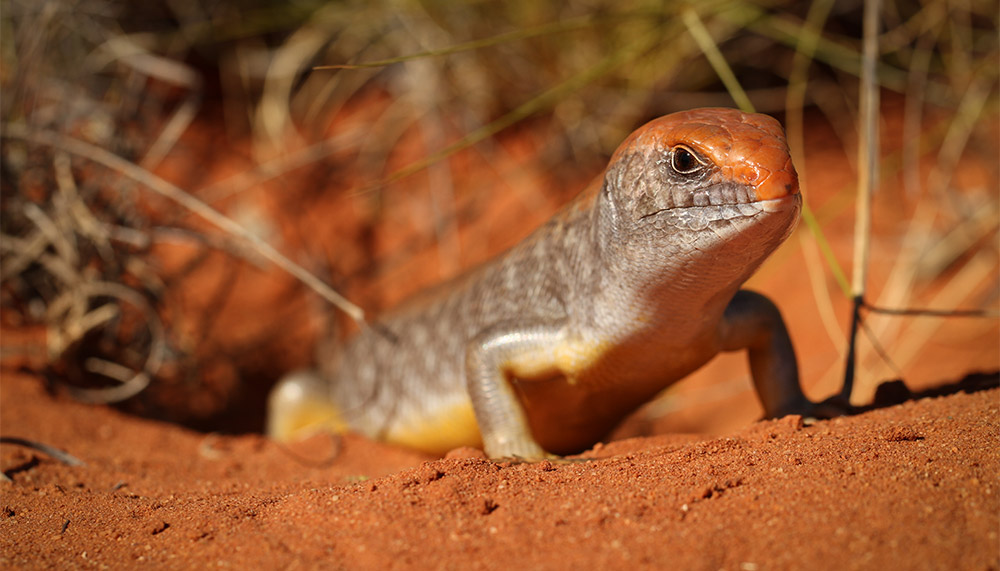Ancient Aboriginal knowledge forms the basis of a recovery plan for the great desert skink.
Story Anthony Ham Photo Josef Schofield
Spiritually significant for desert peoples, the great desert skink is also great to eat. It’s celebrated by Indigenous people across the desert in art, dance and song. “It used to be an important source of meat for Aboriginal people and is part of the creation story, with its own Tjukurrpa sites and ceremonies,” says Katherine Njamme, a Ngururrpa ranger in north-eastern WA. “My mum and dad used to cook this one for us because it’s nice and soft – soft for kids to eat, no bones.”
Great desert skink expert and wildlife ecologist with the Australian Wildlife Conservancy (AWC), Dr Danae Moore, says the skink was a static food resource. “It didn’t move around; it was reliable,” she says. “One group calls them ‘butter sticks’ – they’re just these lovely, fatty sticks.”
Scientists also have a soft spot for the skink. “The great desert skink is a unique species – a very charismatic reptile with beautiful bright orange colours, the colour of the sand,” says Dr Rachel Paltridge, one of the pioneers in great desert skink research and conservation. “Whole family groups live together, and you can have 10 or 12 in one burrow system. The young ones stay with the adults until they’re 2 or 3 years old, which is very unusual for a reptile.” It’s one of few reptiles known to rear young.
This story excerpt is from Issue #146
Outback Magazine: December/January 2023









